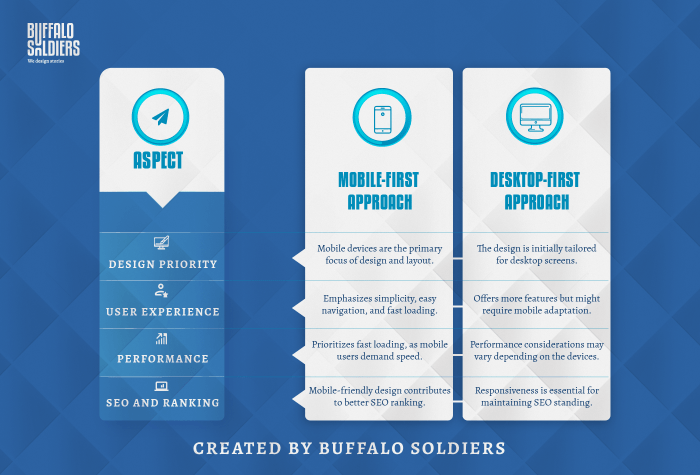Creating Mobile-First Content sets the stage for a digital revolution, where engaging design meets seamless functionality, capturing the essence of modern creativity.
In today’s fast-paced world, mobile devices have become the go-to choice for accessing information, making it crucial for businesses to prioritize mobile-first content creation.
Benefits of Mobile-First Content
Creating content with a mobile-first approach is essential in today’s digital landscape due to the increasing number of mobile users worldwide. With more people accessing the internet through their smartphones and tablets, it is crucial to prioritize mobile optimization to reach a wider audience and provide a seamless user experience.
Mobile-first content can improve user experience and engagement by ensuring that the content is easily accessible and readable on smaller screens. By optimizing content for mobile devices, you can enhance readability, load times, and overall user interaction, leading to higher engagement and retention rates.
In addition, mobile-first content can enhance and increase visibility on search engines. Search engines like Google prioritize mobile-friendly websites in their rankings, so having content that is optimized for mobile devices can improve your search engine rankings and drive more organic traffic to your site.
Examples of Mobile-First Content Benefits
- Responsive design that adapts to different screen sizes
- Faster load times for mobile users
- Improved readability and accessibility on smaller devices
- Higher click-through rates and lower bounce rates
Strategies for Creating Mobile-First Content
Responsive design is crucial in mobile-first content creation as it ensures that your website or app adapts seamlessly to various screen sizes and devices. This means that whether a user is on a smartphone, tablet, or desktop, they will have a consistent and optimized experience.
Content Hierarchy for Mobile Users
When prioritizing content hierarchy for mobile users, it’s essential to keep important information at the forefront. This includes placing key messages, call-to-action buttons, and essential navigation elements in easily accessible areas. By simplifying the content structure and focusing on what matters most, you can enhance user engagement and conversion rates.
Optimizing Images and Videos, Creating Mobile-First Content
To optimize images and videos for mobile viewing, consider reducing file sizes without compromising quality. This can be achieved through compression techniques or using formats like WebP for images and MP4 for videos. Additionally, ensure that visuals are responsive and scale appropriately to fit different screen sizes, providing an engaging multimedia experience for mobile users.
AMP (Accelerated Mobile Pages)
AMP is a powerful tool for creating mobile-friendly content by providing lightning-fast loading times and improved performance on mobile devices. By implementing AMP, you can enhance user experience, reduce bounce rates, and boost your site’s visibility in search engine results. Consider leveraging AMP to deliver a seamless and optimized mobile experience for your audience.
Best Practices for Mobile-First Content

When it comes to designing mobile-first content, there are certain best practices to keep in mind to ensure a seamless user experience. Here are some key points to consider:
Common Pitfalls to Avoid
- Avoid using large images or videos that slow down loading times.
- Avoid cluttered layouts that make it difficult for users to navigate.
- Avoid using too much text that may overwhelm mobile users.
Significance of Fast Loading Times
Fast loading times are crucial for mobile content as users expect quick access to information on their devices. Slow loading times can lead to high bounce rates and a negative user experience.
Importance of Clear and Concise Copywriting
Clear and concise copywriting is essential for mobile-first design to convey messages effectively in a limited space. Use short and impactful sentences to capture users’ attention quickly.
Successful Brands in Mobile-First Content
Several brands have excelled in creating mobile-first content, including Starbucks, Airbnb, and Nike. These brands prioritize mobile users by providing seamless experiences tailored for smaller screens.
User Experience in Mobile-First Content: Creating Mobile-First Content

User experience design plays a crucial role in mobile-first content creation by ensuring that the content is easily accessible, engaging, and intuitive for users on mobile devices.
Optimizing Navigation and User Interactions
- Ensure simple and intuitive navigation menus that are easy to use on smaller screens.
- Optimize touch interactions by making buttons and links large enough to tap without difficulty.
- Implement gestures like swipe and pinch-to-zoom for a more interactive user experience.
Importance of Mobile-Friendly Forms and Calls-to-Action
- Design forms that are easy to fill out on mobile devices with minimal typing required.
- Create clear and prominent calls-to-action that are easily clickable on touchscreens.
- Optimize form fields and buttons for mobile responsiveness to enhance user experience.
Conducting User Testing for Mobile-First Content
- Utilize testing tools to analyze user behavior on mobile devices and identify areas for improvement.
- Gather feedback from real users to understand their pain points and preferences when interacting with mobile content.
- Iterate on design and content based on user testing results to continuously enhance the mobile user experience.
